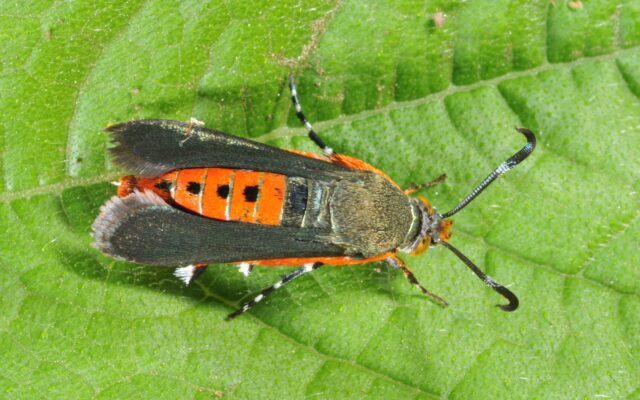The squash vine borer is a member of the clear-winged moths, a unique group of moths that are active during the daytime. They are very beautiful with their bright colored orange tufts on their legs, but can be devastating. The insect overwinters as a late instar larva or pupa in the soil. In our region, as the soil warms they complete their development and adults emerge around mid-June. There are multiple ways to monitor for this pest, but currently we have bucket traps deployed throughout the state. The traps are equipped with a pheromone lure that smells like the females and pulls the male moths into the bucket. Trapping adult male moths can help us better understand their biology, peak emergence, and timing of management strategies. Within three days of adult emergence, the females are ready to begin laying eggs. In the database below, find the location closest to your crop to track SVB activity. See this article for management.
Squash Vine Borer Trap Catches-Indiana ONLY
Empty cells indicate that a trap was not collected and emptied. A zero in the cell indicates that no moths were captured during the observation period.
Squash Vine Borer Trap Catches-Urban Farms NC Region
With support from the Great Lakes Urban Ag IPM Working Group, we have expanded our trapping network to urban farms throughout the north central region.
